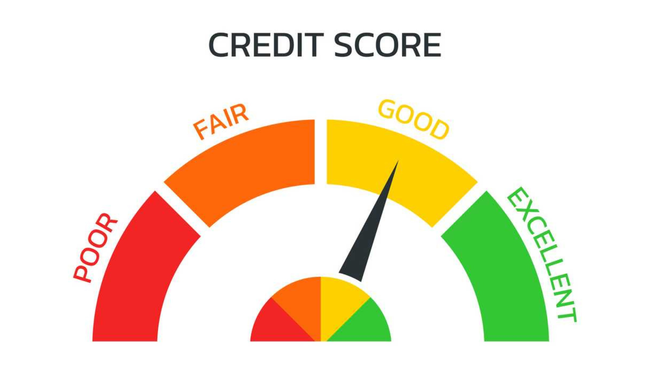Introduction
India, with its sprawling landscapes, diverse cultures, and rapidly changing socio-economic fabric, stands as an emblem of evolving Asia. In the bustling lanes of its ancient markets to the high-rises shadowing its burgeoning tech hubs, one element that's steadily defining and influencing its urban and rural citizens alike is the financial framework. As India continues to march forward on the path of economic growth and global integration, the systems supporting its financial infrastructures are modernizing at an unprecedented rate. One such pivotal element, deeply embedded in this modern financial framework, is the credit score. It's more than just a number; it's an indicator, a measure, a report card of an individual's financial discipline and responsibility. But how did this metric, now deemed so crucial in the subcontinent, evolve and come to hold such significance? Let’s journey into the heart of India's financial labyrinth to understand.
Historical Context
Historically, India’s financial landscape was rooted deeply in community-based lending systems. From local moneylenders to community chit funds, the essence of borrowing revolved around trust and longstanding relationships. But as the nation began its tryst with economic liberalization in the 1990s, a need for a more structured and systematic approach to lending and borrowing arose.
In the early 2000s, India saw the establishment of its first credit information company, Credit Information Bureau (India) Limited (CIBIL), with the support of the Reserve Bank of India (RBI). This was a transformative move, signaling the country's shift from traditional, trust-based lending systems to more data-driven, objective methodologies. The purpose was clear: to assess the 'creditworthiness' of an individual based on their past and present financial behaviors.
With the establishment of CIBIL, lenders found a new, reliable tool at their disposal, allowing them to make more informed decisions. Over time, more players, both domestic and international, like Experian, Equifax, and CRIF High Mark, entered the Indian market, enriching the credit information ecosystem.
As urbanization and digitalization gained momentum, the younger, tech-savvy Indian demographic began to seek faster and more streamlined financial services. The importance of the credit score started to echo louder, influencing not just major financial decisions like home buying or car loans but also impacting smaller, everyday aspects like getting a credit card or even some employment opportunities.
Today, while the core values of trust and personal relationships still hold their ground in many facets of Indian life, when it comes to credit, the country stands firmly on the data-rich, analytical grounds established over the past couple of decades.
Understanding the Credit Score
In India, the credit score is a three-digit number ranging between 300 to 900, with 900 being the highest score. The score is derived from an individual's credit history and reflects their creditworthiness. Several CICs in India, such as CIBIL, Experian, Equifax, and CRIF High Mark, provide credit scores.
Factors affecting the credit score in India
Repayment History
Timely repayments of loans and credit card bills have the most significant impact.
Credit Utilization Ratio
How much credit one uses concerning their credit limit.
Length of Credit History
The duration for which one has been availing credit.
Credit Mix
A combination of secured (like home loans) and unsecured loans (like personal loans).
Recent inquiries
Number of times one has applied for credit recently.
Significance of a Good Credit Score
A good credit score in India (typically considered 750 and above) opens up a plethora of advantages:
Easier Loan Approvals
Banks and financial institutions favor individuals with high scores.
Lower Interest Rates
Favorable terms and conditions, including reduced interest rates.
Higher Borrowing Limit
Based on a good track record, lenders might offer a more considerable credit amount.
Negotiation Power
With a stellar score, one might negotiate better terms for their loans or credit cards.
Tips to Maintain a Healthy Credit Score
Timely Payments
Always ensure that EMIs and credit card bills are paid promptly.
Avoid Excessive Borrowing
Do not utilize the entire credit limit provided.
Limit Loan Inquiries
Each loan application involves a credit check, which can lower the score.
Regularly Check Credit Reports
Review credit reports for discrepancies or unauthorized activities.
Conclusion
In the vast tapestry of India's financial narrative, the credit score stands out as a beacon of change, bridging the old with the new. From the local moneylenders of yesteryears to today's sophisticated digital lending platforms, the paradigm of trust has been reshaped and redefined. Today, the credit score isn't just a number; it's a reflection of India's journey into financial modernization. As the nation continues to evolve, so does the weightage and understanding of this three-digit number. For individuals, it signifies more than just their borrowing habits; it represents their ability to adapt and thrive in an ever-evolving financial landscape. And for India, as a nation, it symbolizes its progressive stride into a future where financial inclusivity is paired with accountability. As the chapters of this story continue to unfold, the credit score remains a testament to the balance of tradition and innovation in India's robust economic journey.

